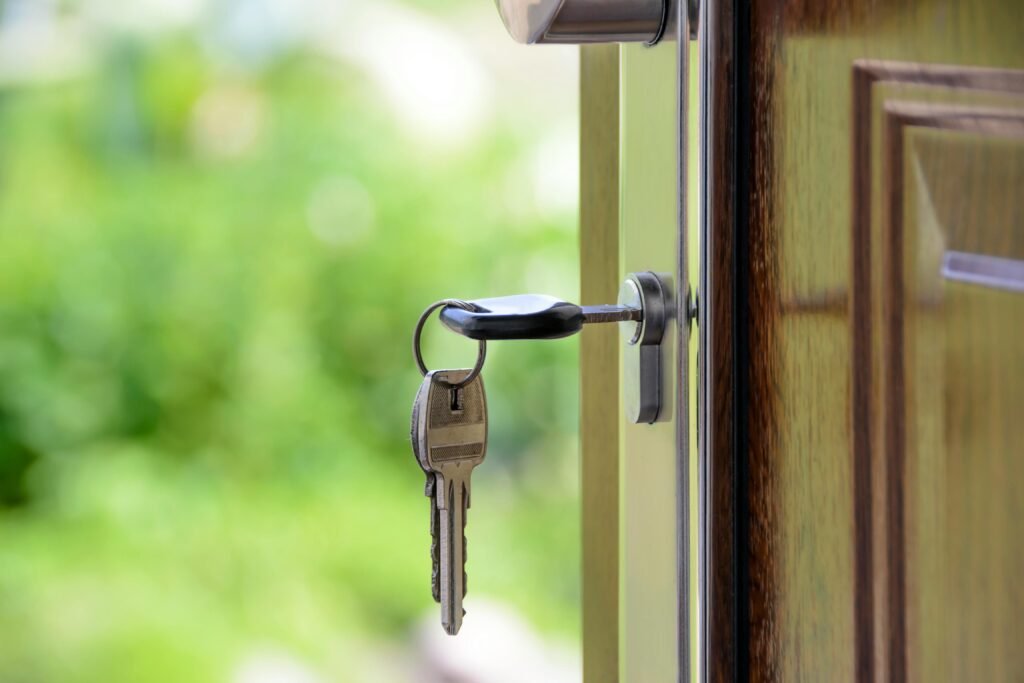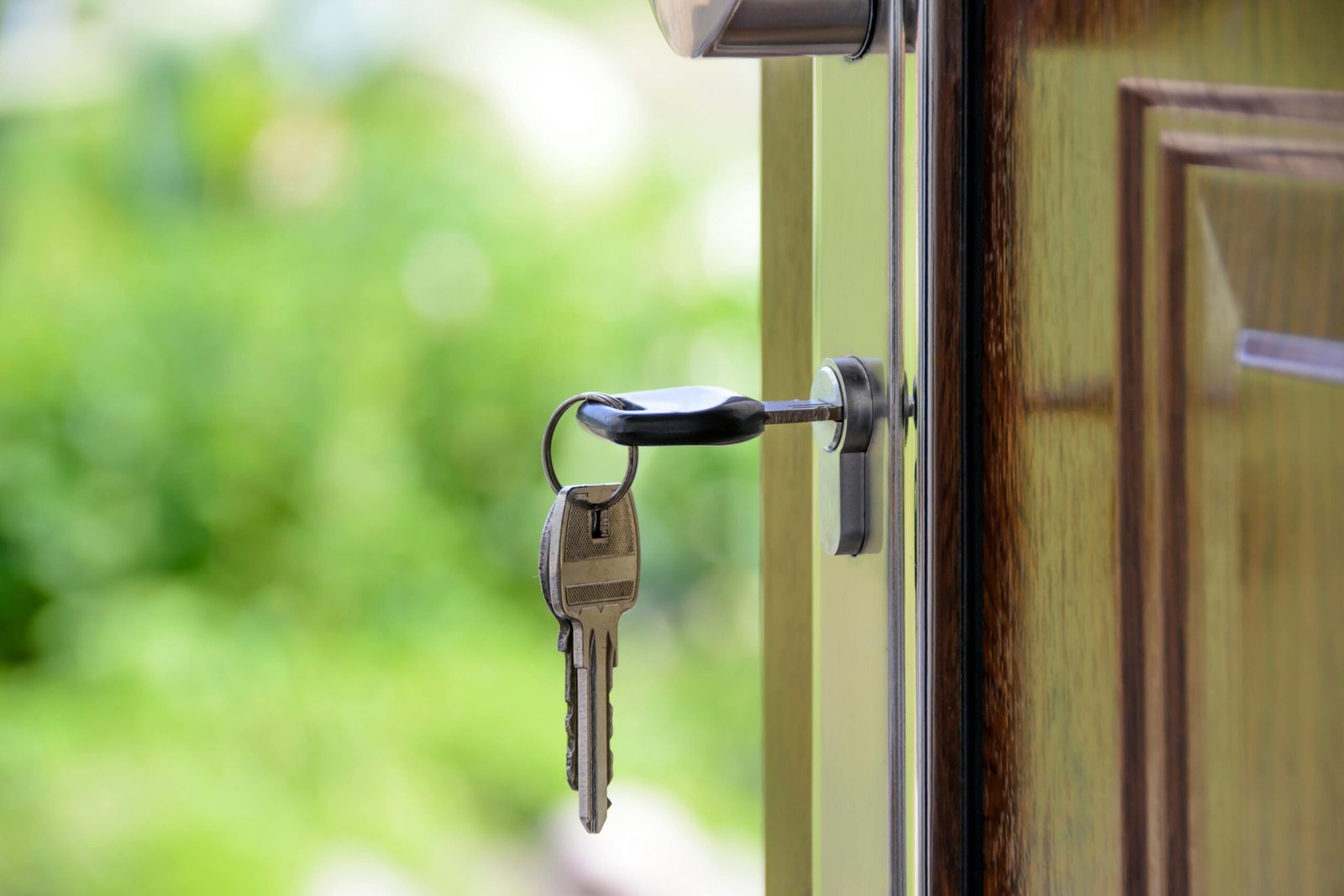In the world of ever-increasing security threats, it is crucial to have reliable and efficient locking mechanisms that can safeguard our belongings. The article explores the latest advancements in locking technology, focusing on state-of-the-art mechanisms that offer ultimate security. From biometric locks to smart locks, this informative piece highlights the cutting-edge features and benefits of these advanced systems. Whether you are protecting your home, office, or valuable possessions, these locking mechanisms set the bar high when it comes to maximum security. Get ready to discover the future of locking technology!

This image is property of images.pexels.com.
Biometric Locks
Fingerprint Recognition
Biometric locks are among the most cutting-edge and secure locking mechanisms available today. Fingerprint recognition is a widely-used biometric technology that provides exceptional security for your home or business. With this technology, you can store multiple fingerprints in the lock’s memory and grant access only to authorized individuals. When utilizing a fingerprint recognition lock, you simply place your finger on the designated sensor, and the lock will quickly and accurately verify your identity. This eliminates the need for traditional keys or codes, reducing the risk of unauthorized entry. Fingerprint recognition locks are highly reliable and incredibly difficult to bypass, making them an excellent choice for anyone seeking top-notch security.
Retina Scanning
Retina scanning is another sophisticated biometric technology used in high-security locking systems. By analyzing the unique pattern of blood vessels in the retina, these locks provide an incredibly accurate method of identification. Retina scanning is particularly secure because the blood vessels in the retina are virtually impossible to replicate or deceive. This makes it an ideal option for individuals or organizations that require the utmost security, such as government facilities or research labs. With a retina scanning lock, you can be confident that only authorized individuals can gain access to your property.
Facial Recognition
Facial recognition technology has seen significant advancements in recent years and is now being used in advanced locking mechanisms. This technology analyzes the unique features of a person’s face, such as the arrangement of facial landmarks and the proportions of various facial components, to determine their identity. Facial recognition locks can be incredibly accurate, even in varying lighting conditions or with changes in appearance such as facial hair or glasses. These locks offer convenient and secure access control, as all you need to do is have your face scanned by the lock’s camera. Facial recognition locks are highly effective in preventing unauthorized access, making them a popular choice for those who prioritize convenience and security.
Smart Locks
Bluetooth Connectivity
Smart locks are revolutionizing the way we secure our homes and buildings. One of the key features of smart locks is Bluetooth connectivity. By connecting your lock to your smartphone via Bluetooth, you can easily control and monitor access to your property. With a compatible mobile app, you can lock or unlock your door remotely, granting access to family members, friends, or service providers even when you are not physically present. Bluetooth connectivity adds an additional layer of convenience and flexibility to your security system.
Wi-Fi Integration
Another important aspect of smart locks is Wi-Fi integration. By connecting your smart lock to your home or office Wi-Fi network, you can access and control your lock from virtually anywhere in the world. Wi-Fi integration allows you to monitor real-time access logs, receive notifications whenever someone enters or exits your property, and even securely share temporary access codes with guests. This level of remote control and monitoring gives you peace of mind, knowing that you can keep an eye on your property at all times.
Mobile App Control
Smart locks are designed to provide convenience and ease of use, and mobile app control takes this convenience to the next level. By using a mobile app specifically designed for your smart lock, you can have complete control over your lock from the palm of your hand. From the app, you can grant or revoke access to individuals, view lock status, receive real-time notifications, and even customize security settings. Mobile app control ensures that you can manage your lock’s security features at your convenience and with just a few taps on your smartphone.

This image is property of images.pexels.com.
Keypad Locks
PIN Code Entry
Keypad locks have long been a popular choice for both residential and commercial properties. With a keypad lock, you can enter a unique PIN code to gain access. This eliminates the need for physical keys, reducing the risk of lost or stolen keys compromising your security. Keypad locks offer convenience and flexibility, allowing you to easily change the PIN code whenever necessary. Additionally, keypad locks often feature backlit keypads, ensuring easy visibility even in low light conditions.
Anti-Peeping Technology
One of the concerns with traditional keypad locks is the potential for others to observe your PIN entry and gain unauthorized access. To address this security vulnerability, modern keypad locks now incorporate anti-peeping technology. This feature ensures that even if someone is observing your PIN entry from a distance, they will not be able to determine the actual sequence of numbers. Anti-peeping technology enhances your security and privacy, giving you peace of mind.
Automatic Lockout
Another valuable feature of keypad locks is automatic lockout. This feature is especially useful in situations where multiple incorrect PIN attempts are made. After a predetermined number of failed attempts, the lock automatically enters a temporary lockout mode, preventing further access attempts for a certain period of time. This security measure effectively deters any unauthorized individuals who may be attempting to guess your PIN code. Automatic lockout provides an additional layer of security, ensuring that your property remains protected.
Keyless Entry Systems
Proximity Sensors
Keyless entry systems utilize advanced technology to provide easy and secure access to your property. Proximity sensors are a key component of these systems and allow for convenient hands-free entry. When you approach the lock with a keyless entry system, the proximity sensor detects your presence and automatically unlocks the door. This means you no longer need to fumble for your keys in your pocket or bag, making keyless entry systems incredibly convenient, especially in situations where you have your hands full.
RFID Technology
Radio Frequency Identification (RFID) technology is commonly used in keyless entry systems to accurately and securely grant access. With RFID technology, a small electronic device, known as an RFID tag or key fob, is associated with each authorized individual. When the RFID tag is brought close to the lock, it communicates with the lock’s reader, verifying the user’s identity and granting access if authorized. RFID technology is highly secure, as the RFID tag has a unique identifier that cannot be easily duplicated or tampered with, providing reliable access control.
Remote Control Access
One of the significant advantages of keyless entry systems is the ability to grant access remotely. By incorporating remote control access, you can use a mobile app or a web-based platform to monitor and control your keyless entry system from anywhere. This feature allows you to grant access to individuals even when you are not physically present, making it convenient for welcoming guests or providing access to service providers. Remote control access adds flexibility and ease of use to your security system, ensuring that you always maintain control over who enters your property.

This image is property of images.pexels.com.
High-Security Cylinder Locks
Anti-Pick Mechanisms
High-security cylinder locks are designed to protect against picking and manipulation attempts. To achieve this, these locks incorporate advanced anti-pick mechanisms that make it extremely difficult for unauthorized individuals to bypass the lock. These mechanisms often include a combination of special pins, security pins, and advanced keyways. The result is a lock that offers exceptional resistance to picking, providing you with peace of mind and enhanced security for your property.
Bump-Proof Design
Lock bumping is a technique that involves the use of a specially crafted key, known as a bump key, to quickly and easily unlock a traditional cylinder lock. High-security cylinder locks are designed with a bump-proof design that renders this technique ineffective. Through the use of unique pin arrangements, specialized keyways, and durable materials, these locks provide effective protection against lock bumping, ensuring that unauthorized entry is nearly impossible.
Drill Protection
Drilling is another common method used by burglars to gain access to properties secured with cylinder locks. High-security cylinder locks are designed to withstand drilling attempts. These locks are constructed with reinforced materials, such as hardened steel, and often incorporate specialized drill-resistant plates and pins. This makes it extremely challenging for burglars to drill through the lock cylinder, providing you with an extra layer of security and defending your property against entry through drilling methods.
Electronic Safes
Digital Keypad
Electronic safes offer secure storage for valuables and important documents, providing peace of mind knowing your belongings are protected. These safes typically feature a digital keypad for inputting a unique PIN code to unlock the safe. The advantage of a digital keypad is that it eliminates the need for keys, reducing the risk of losing or misplacing them. Electronic safes with digital keypads are highly convenient and offer easy access to your valuables while maintaining a high level of security.
Biometric Authentication
In addition to PIN code entry, many electronic safes incorporate biometric authentication methods for enhanced security. Biometric authentication involves using unique physical characteristics, such as fingerprints or retina patterns, to grant access. By utilizing biometric authentication, electronic safes provide an added layer of security as these physical characteristics are virtually impossible to replicate or forge. This ensures that only authorized individuals can gain access to your safe, offering advanced protection for your valuable items.
Tamper Alerts
Electronic safes offer an additional level of security through tamper alerts. These safes are equipped with sensors that detect any tampering attempts, such as unauthorized access or forced entry. If any suspicious activity is detected, the safe will trigger an alarm and send an alert to the owner or an assigned security monitoring system. Tamper alerts provide immediate notification of any unauthorized access attempts, allowing you to respond quickly and take appropriate action to protect your belongings.
Security Locking Bolts
Deadbolts
Deadbolts are a staple in home security and offer a high level of resistance against forced entry. These locks consist of a solid metal bolt that extends into the door frame, making it difficult for intruders to force the door open. Deadbolts can be single-cylinder, requiring a key from the outside and a thumbturn from the inside, or double-cylinder, requiring a key from both sides. The robust construction and effective locking mechanism of deadbolts make them a reliable choice for securing entry doors, providing you with added protection against break-ins.
Latch Guards
Latch guards are another valuable addition to enhance the security of your door. These metal plates are installed around the area where the latch engages with the strike plate on the door frame. Latch guards protect against forced entry techniques, such as prying or jimmying, by reinforcing the latch area and preventing manipulation or tampering. By installing latch guards, you fortify your door’s weakest point and strengthen its resistance to break-ins.
Jimmy-Proof Locks
Jimmy-proof locks, also known as interlocking deadbolts, offer superior resistance against forced entry. These locks are surface-mounted on the interior side of the door and feature two interlocking cylinders. One cylinder is used to lock or unlock the deadbolt from the inside, while the other cylinder prevents the bolt from being retracted. Jimmy-proof locks are specifically designed to resist attempts to spread the door frame or otherwise force the door open. By utilizing interlocking mechanisms, these locks provide enhanced security and deter unauthorized entry.
Magnetic Locks
Electromagnetic Force
Magnetic locks, also known as maglocks, operate by using an electromagnetic force to secure doors. These locks consist of an electromagnet mounted on the door frame and an armature plate mounted on the door. When the lock is activated, the electromagnet creates a strong magnetic force, essentially “locking” the door by attracting and holding the armature plate. Magnetic locks offer significant holding force and make it extremely difficult for intruders to force their way into a secured area.
Fail-Safe/Fail-Secure Options
Magnetic locks are available in both fail-safe and fail-secure options, offering flexibility and adaptability to various security needs. Fail-safe locks are designed to release the secured door in the event of a power failure or emergency situation, ensuring easy and quick evacuation. Fail-secure locks, on the other hand, remain locked even during power outages or emergencies, providing maximum security and preventing unauthorized access. The choice between fail-safe and fail-secure locks depends on the specific security requirements of your property.
No Physical Keyway
One of the distinct features of magnetic locks is the absence of a physical keyway. Traditional locks with keyways can present vulnerabilities, as keys can be lost, stolen, or duplicated. Magnetic locks eliminate this risk by relying solely on electromagnetic force to secure the door. Without a physical keyway, there is no risk of unauthorized access through key manipulation or lock picking. Magnetic locks offer a high level of security, particularly in environments where key control is a concern.
Dual Locking System
Combining Multiple Lock Types
The dual locking system involves the combination of two or more different lock types to provide enhanced security. By utilizing different types of locks in conjunction, you create a multi-layered security approach that significantly deters unauthorized entry. For example, you could combine a fingerprint recognition lock with a keypad lock or a keyless entry system with a deadbolt. This combination of lock types makes it more challenging for an intruder to bypass your security measures, reinforcing the overall security of your property.
Double Verification Process
A crucial advantage of a dual locking system is the incorporation of a double verification process. This process ensures that access is granted only when multiple forms of authentication are successfully completed. For instance, if you have a fingerprint recognition lock and a keypad lock, both mechanisms must confirm the identity of the individual before granting access. This double verification process minimizes the risk of unauthorized entry, as it requires the intruder to defeat multiple security measures to gain access.
Enhanced Burglary Resistance
The dual locking system offers enhanced burglary resistance through its combination of lock types and double verification process. By employing multiple locking mechanisms, you create a powerful deterrent against break-ins. Intruders face the challenge of defeating multiple security measures, significantly increasing the difficulty of gaining unauthorized access. The dual locking system provides added protection and reassurance, ensuring that your property is secure against potential threats.
Advanced Alarm Integration
Motion Sensors
Advanced alarm integration enhances the security of your property by incorporating motion sensors into your overall security system. Motion sensors detect any movement within a specified area and trigger an alarm. By integrating these sensors into your security system, you can detect and deter potential intruders before they gain access to your property. Motion sensors are highly effective in securing outdoor spaces, such as gardens or driveways, as well as indoor environments, adding an extra layer of security to your overall system.
Intrusion Detection
Intrusion detection systems are designed to detect and alert you to any unauthorized entry or attempted break-in. These systems utilize sensors, such as door/window sensors or vibration sensors, to monitor potential access points. If an intrusion is detected, the system immediately triggers an alarm and notifies you or a security monitoring service. Intrusion detection systems provide heightened security and are particularly valuable for properties at risk of forced entry or where additional security measures are necessary.
Remote Monitoring
Remote monitoring allows you to keep an eye on your property from anywhere at any time. By integrating remote monitoring into your alarm system, you can access live video feeds or receive real-time notifications when the system detects any suspicious activity. This feature provides convenience, control, and peace of mind, as you can monitor your property remotely and take appropriate action if necessary. Remote monitoring significantly enhances your security system by offering added visibility and proactive responses to potential threats.
In conclusion, the advancement of locking mechanisms has brought about a wide range of state-of-the-art options for maximizing security. Biometric locks, smart locks, keypad locks, keyless entry systems, high-security cylinder locks, electronic safes, security locking bolts, magnetic locks, dual locking systems, and advanced alarm integration all offer varying levels of security and convenience for different applications. By understanding these advanced mechanisms, you can make informed choices to safeguard your property and loved ones effectively. Remember, security is a priority, and investing in modern locking technologies can help provide the ultimate peace of mind.
